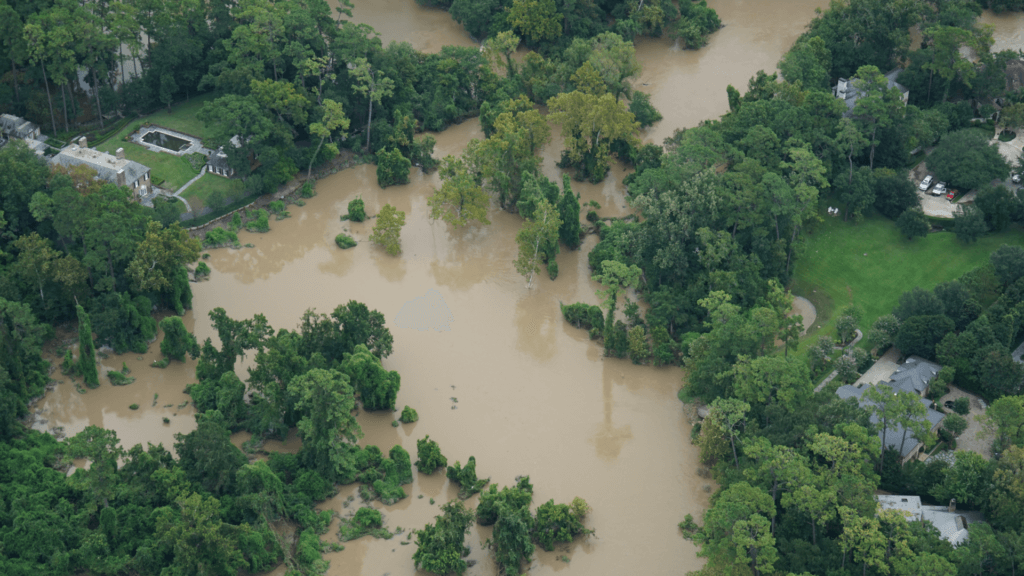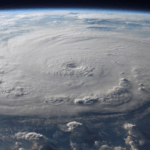
It’s no secret that an incoming hurricane poses a major threat to those in coastal communities. These powerful storms can cause devastating storm surges and heavy rain that can result in widespread flooding. Hurricane-strength winds are powerful enough to cause extensive damage to homes and other real property. While the initial impact of a storm is incredibly destructive, inland communities are not at all immune to the property damage a hurricane can cause. Understanding the different factors that contribute to why hurricanes pose major property damage concerns for inland communities is important for residents in these areas who may be impacted.
Hurricane Damage Can Extend to Inland Communities
As hurricane season approaches each year, property owners begin the process of preparing their spaces for the possibility of property damage. Despite often being looked at as weather events that mostly affect coastal areas, hurricanes often also cause additional destruction as they move further inland. While most residents in Texas, Louisiana, Florida, and other hurricane-prone areas understand just how intense hurricane-force winds and flooding can be, as these events become more common, it’s important that those who live in and own property in other areas of the country are well aware of the various hazards a hurricane can present.
Hurricanes have the potential to travel up to 100 to 200 miles inland. Although some storms lose steam as they move inland, as they can no longer draw upon the heat from the ocean, these systems can still unleash torrential rains, causing unprecedented flooding to inland communities.
For instance, when Hurricane Harvey hit the Texas coast in 2017, much of the severe flooding impacted inland communities in the Houston area for an extended period. While the hurricane’s strength diminished shortly after making landfall, the area experienced days of heavy rain that caused an unprecedented amount of flooding and property damage to inland communities. Although Harvey happened several years ago, many Houston residents are still struggling to fully repair their homes and businesses to this day.
In 2021, Hurricane Ida made impact on Grand Isle, Louisiana. The storm resulted in 150 mph winds and a 14-foot storm surge that decimated the coastal state. Upwards of 15 inches of rain fell across Louisiana and Alabama after Ida’s initial impact. However, Ida’s path did not end there, as the system moved further north, dropping more than 10 inches of rain in parts of Pennsylvania and New York state, two states that often don’t experience this type of heavy rain and destruction. All of the rain led to extensive flash floods in heavily populated cities like New York, inundating basement apartments and subway stations, and forcing New Jersey residents from their homes.
Just a year later in 2022, Hurricane Ian slammed into the Florida coast with wind speeds of up to 155 mph. A catastrophic storm surge and 20 inches of rain caused major flooding across the peninsula and then moved to the Atlantic coast. While residents living in the more inland portions of Florida felt largely safe at the time the storm made impact, that security would quickly wane as areas more than 150 miles inland faced unprecedented floods, overwhelming stormwater and sewage systems.
As many have seen in recent years, massive and often slow-moving hurricanes typically produce the most flooding. Hurricane-strength winds can also cause damage to inland communities when a tropical storm has sustained winds of frequent gusts of 74 mph or greater. This results in considerable damage to inland properties, as well as power outages that can last for weeks.
A Hurricane vs. A Derecho
As hurricanes have become more powerful over the years, other devastating storms that impact different areas of the U.S. have been described as “inland hurricanes.” These events are known as derechos. According to the National Oceanic and Atmospheric Administration (NOAA), a derecho is a widespread, long-lived wind storm that is associated with a band of rapidly moving showers or thunderstorms.
Derechos often pack gusts of 100 mph winds, similar to those typically experienced with hurricanes. These hurricane-strength winds can also stretch for many miles and last for hours. Despite being compared to hurricanes, derechos are relatively rare weather events. This is because they only tend to occur once every four years across portions of the eastern two-thirds of the nation.
Inland Property Damage from Hurricanes
When a hurricane makes landfall and begins its traverse inland, it poses many concerns for properties along the coastline as well as those located further inland. Some of the potential risks of a hurricane that can cause extensive property damage include:
Storm Surge
A storm surge refers to an abnormal rise in seawater levels when a tropical storm or hurricane happens. Storm surges are measured by the height of water above normal predicted tide movement. This height can be up to two stories tall along the coastline and has the potential to flood communities several miles inland. In most cases, this water is driven by hurricane-force winds and can contain dangerous debris, sewage, and even electrical currents from downed power lines.
Hurricane Force Winds
One of the defining factors of a hurricane is extremely powerful winds. These winds can travel farther inland after a hurricane has made landfall and can cause considerable property damage, as well as power outages. The highest hurricane wind speeds are often found within the eye wall of the storm and in the area to the right of the storm’s eye, or the right-front quadrant. Areas this quadrant passes over often experience the most extensive damage, as these storms can sustain their strength over land.
Tornadoes
Hurricanes and tropical storms have the potential to produce tornadoes. These weather events can contribute to the overall destruction caused by a hurricane. Similar to the extreme winds produced during a hurricane, tornadoes are most likely to develop in the right-front quadrant of a hurricane. While these tornadoes are typically less intense than those found in Tornado Alley, they can produce a substantial amount of damage to anyone and anything in their path.
Hurricane Commercial Property Insurance Claim Attorneys
Despite the massive amounts of damage a hurricane can cause both along the coast and further inland, many who reside or do business in these areas can face roadblocks from their insurance providers in the aftermath. At Raizner Slania, our team of hurricane commercial property damage insurance claim attorneys understand just how devastating this can be following a destructive natural disaster. Our law firm is familiar with the variety of tactics insurers employ to turn a profit rather than assist those who need them most. If your business has suffered property damage due to a hurricane or tropical storm and your insurance carrier has wrongly denied or delayed coverage, we can help.


